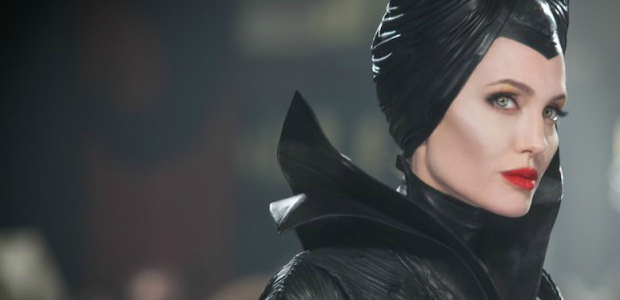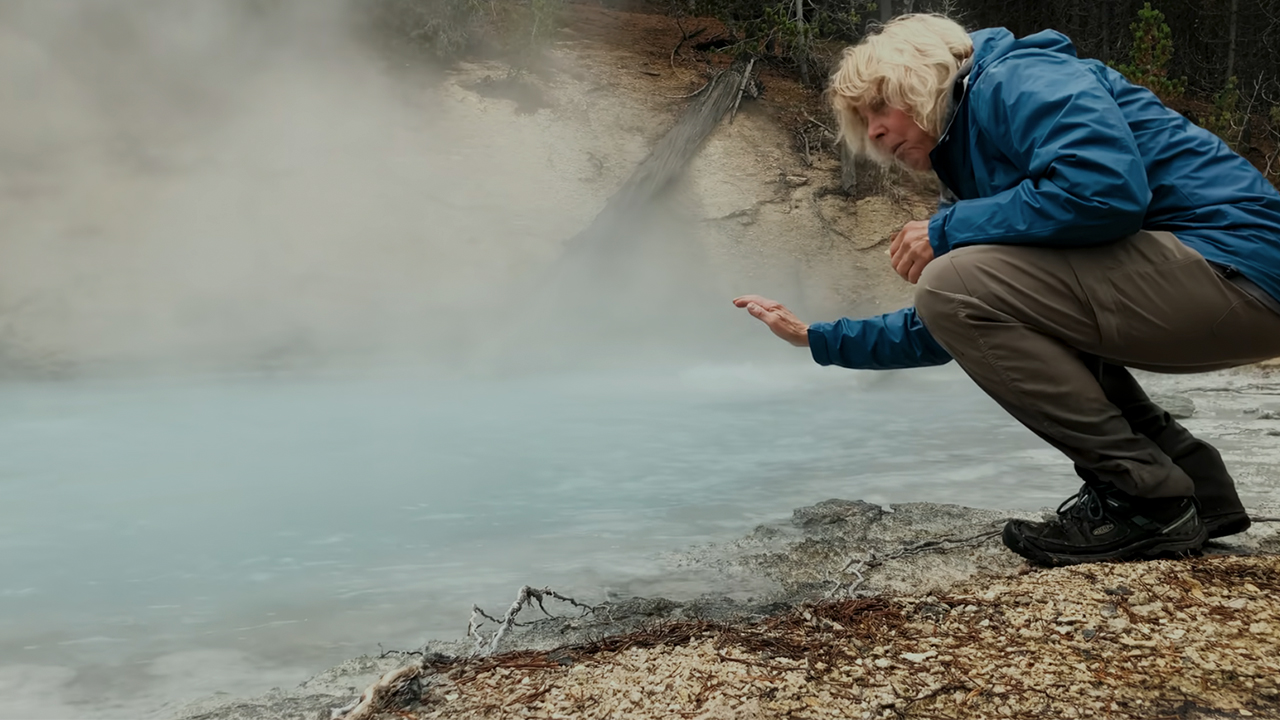Maleficent has been declawed. The classic fairytale villainess with a cackling voice, ruby-red lips and that towering headdress has been given a revisionary story that aims to make her lovable. But instead, Maleficent takes the venom out of its fierce titular figure, and rewrites her story to make her pathetic.
Angelina Jolie stars as Maleficent in a live-action origin story that's meant to do for this evil fairy what Wicked did for The Wizard of Oz's Wicked Witch of the West. But where Wicked gave a backstory that made its witch richer in character and complexity, Maleficent's thinly drawn fantasy makes its villain less compelling by softening her story's sharpest edges and remolding her as a scorned woman on a desperate--and confounding--path of revenge.
In this version, Maleficent wasn't always bad. Once, she was just a young fairy with dark wings, big horns, and a blood-red lip (that looks jarring on the child made-up to play Jolie’s younger version). She lived in the Moor, a land inhabited by the fairies, a land where humans fear to tread. But one day, a young thief named Stefan sneaks onto the Moor and has a fateful meeting with this naïve fairy. Over the years, he continues to visit her, and Maleficent falls for him. (Voiceover insists he too fell for her, but I remain unconvinced.) But as an ambitious man, Stefan is offered an opportunity to claim the crown of the human kingdom; all he has to do is betray his long-time fairy friend. The rest is revised history.
There are bare bones of this film that could have been constructed and fleshed out into something fun and fascinating, but as it is Maleficent is a major misfire and laboriously dull. Its script glosses over key character development sections (like the evolution of Maleficent and Stefan's relationship, and her turn to evil) with a quick bit of voiceover, undercutting potential emotional resonance. At times, the dialogue is so on-the-nose that it feels like an early draft.
The script's biggest issue, though, is that its best moment occurs when it full-on steals dialogue from the 1959 Sleeping Beauty for Maleficent’s big “curse” scene. Finally, the character crackles with the kind of mesmerizing energy and sinister glee that made her such an icon to begin with. Sadly, Maleficent's army of screenwriters quickly opts to lessen the stakes of the fairy’s curse… which might make Maleficent easier to like, but also makes her wildly less interesting.
After her curse is placed, Maleficent doesn't lose track of little Aurora as she does in the animated version. She knows the girl is being raised by three "good" fairies--who in this version are creepy, bobble-headed CGI monstrosities that take their true inspiration from The Three Stooges. Maleficent is never far from Aurora, telling the cooing baby that she hates her and calling her "Beastie." Yes, in this version, Maleficent is reduced to the petulant stalker of an infant. It's pitiful and frustrating.
Jolie herself is a major disappointment because if ever a role called for a bit of camp, it's this. Instead, Jolie plays it painfully straight, offering us just three Maleficent modes. There's the curse-scene Maleficent, with her glamorous evil grins and sultry cackles that play so well in the trailers. Then, for the rest of the film, she's either stone-faced or screaming. This choice makes this once-fascinating figure feel flat. And the supporting cast does little to boost Maleficent's liveliness.
The script makes Stefan and Aurora so two-dimensional they barely make sense as characters. His motivations are religiously glossed over, and Aurora is "blessed" at her christening with being default-mode happy all the time. This gives the bright and bubbly Elle Fanning little to do, and as much as Sharlto Copley spins his wheels to give Stefan some traction, it goes nowhere. Imelda Staunton, Juno Temple, and Lesley Manville offer a little color as the three good fairies, but their characters are painted--and referred to repeatedly--as idiots, which makes Stefan's decision to have them raise his daughter completely perplexing. The most compelling performance offered in Maleficent comes from Sam Riley, who plays Diaval, the evil fairy's wisecracking, shape-shifting sidekick. With rants about which animals he loathes to be, and an unmistakable presence, he actually reminds us what personality is in this fairy tale world so sloppily unfurled.
It's worth noting this tent pole release that redefines Disney mythos was entrusted to a first-time director. Robert Stromberg was the production designer for Disney hits like Oz The Great and Powerful and Alice In Wonderland. And as you might expect, he makes sure Maleficent's CGI creatures (aside from those hideous fairies) are textured and keenly designed. The Moor is filled with curious creatures, lovingly designed. Unfortunately, they serve little purpose in the story itself, and ultimately come off as elaborate set dressing.
There are picturesque moments in Maleficent, from its anti-heroine's introduction as a young sprite, to her first kiss with Stefan, to her final act of redemption. But Stromberg fails to develop the film's characters, so the movie's emotional moments have little to no impact. Action scenes likewise miss the mark, flying by in bursts and blurs. Ultimately, Maleficent does its inspiration a great disservice, stripping away her reputation as a villainess of dazzling power and style, and making her a wounded and petty ex-girlfriend who decides to unleash her heartbreak on a child. In the end, I regret seeing Maleficent, and to preserve my love of the original version--who was evil, but a great deal of fun to watch--I will actively work to forget this movie as fast as possible.
Staff writer at CinemaBlend.












